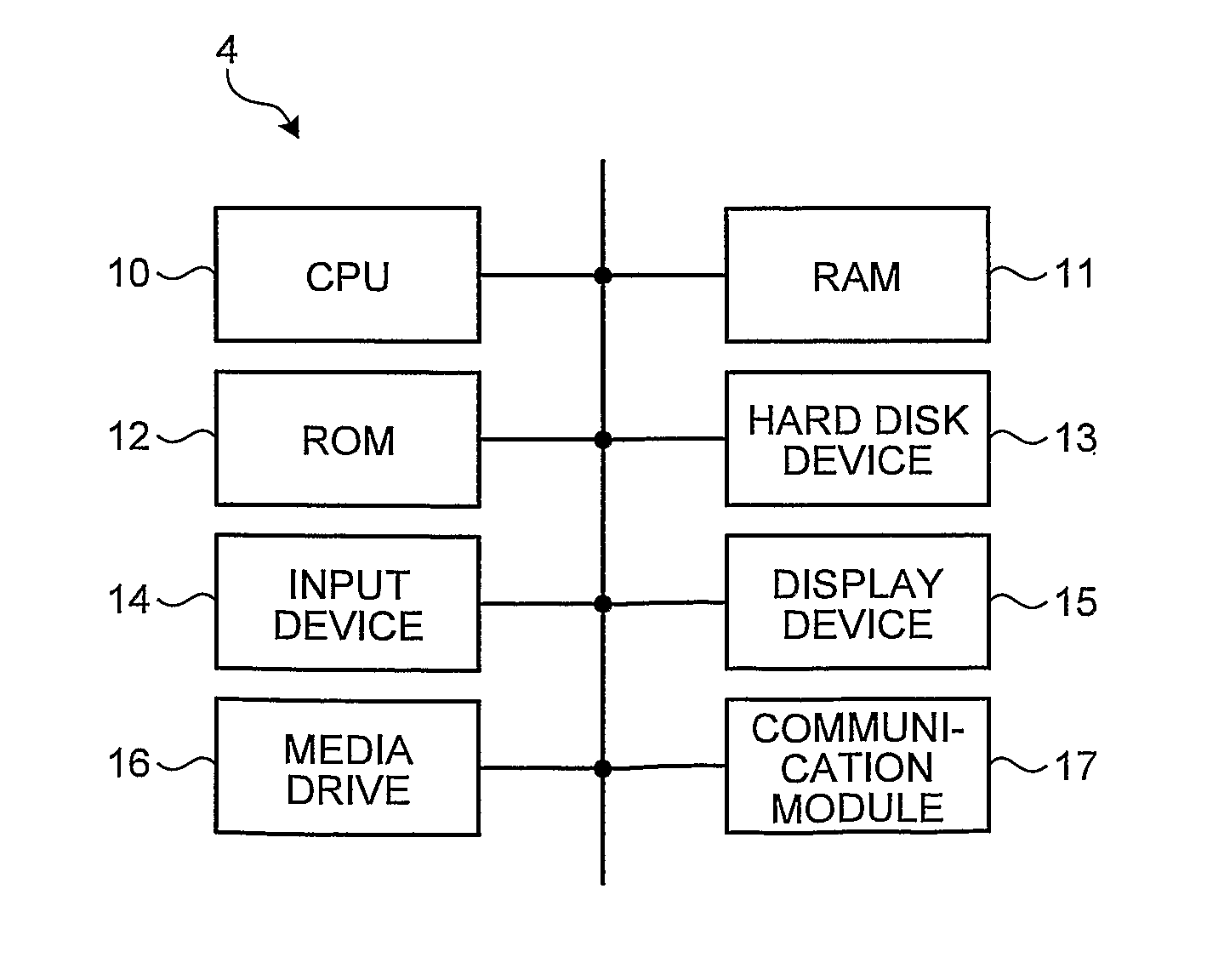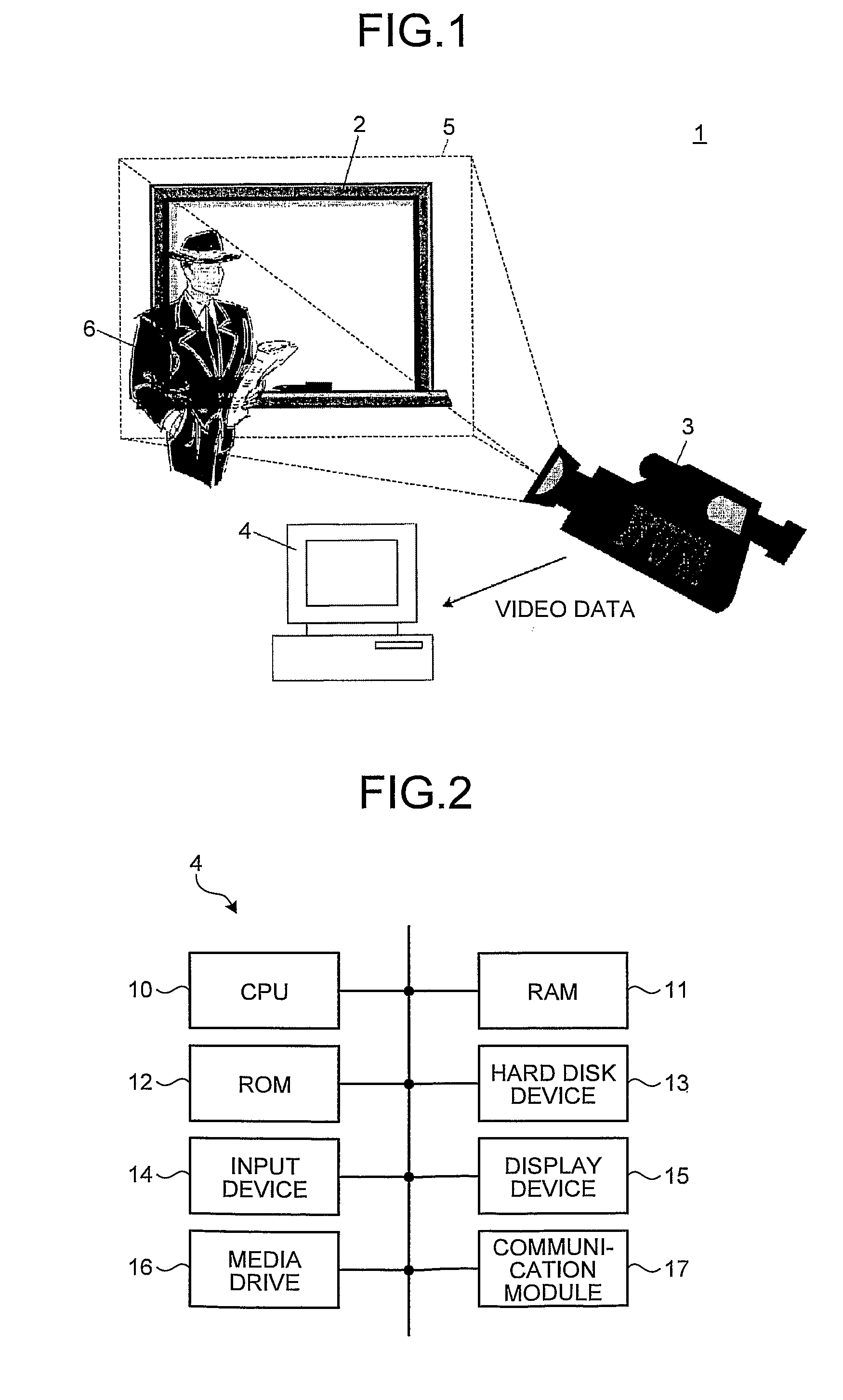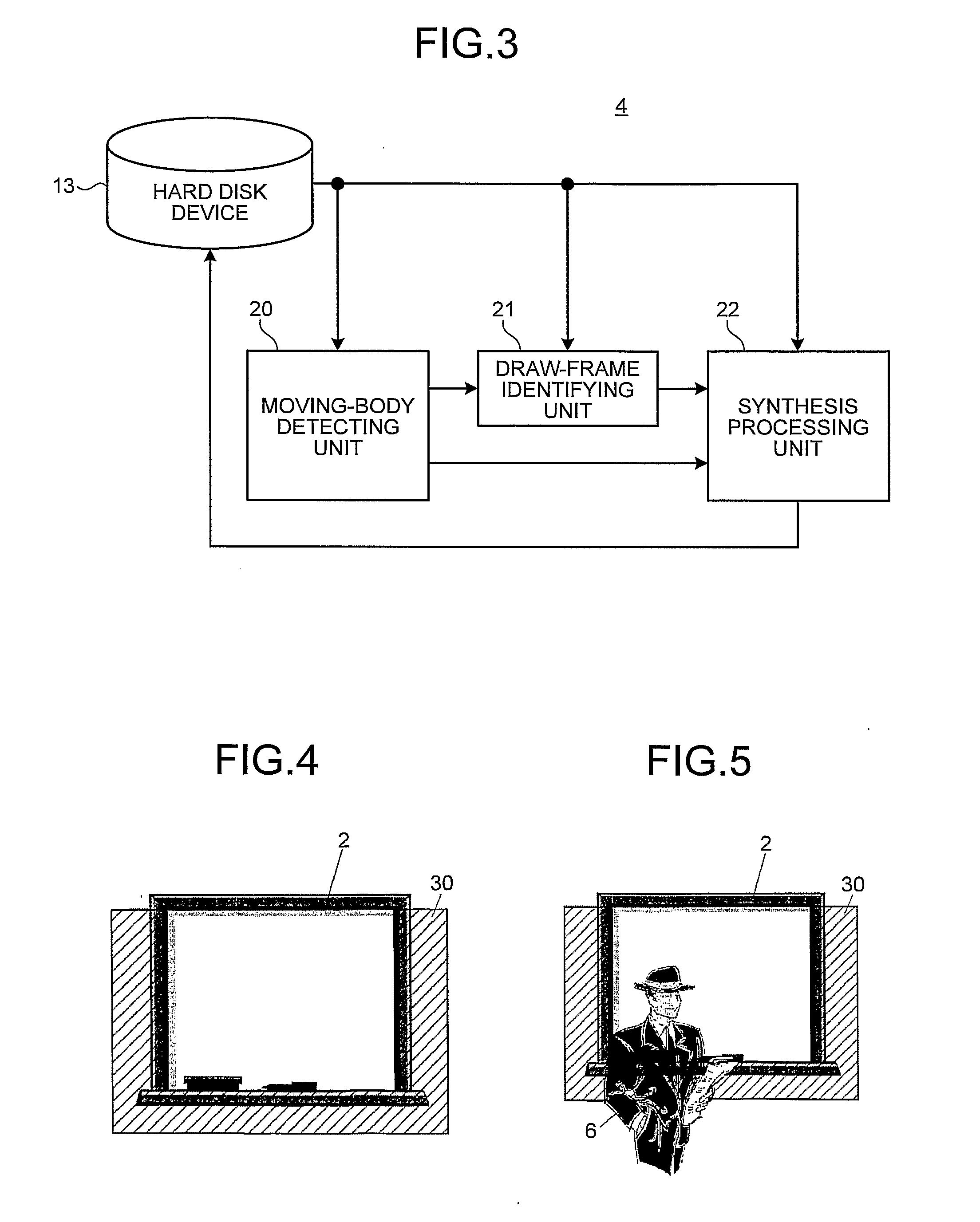Video editing device and video editing system
a technology of video editing and video signal, applied in the direction of electronic editing digitised analogue information signals, instruments, image enhancement, etc., can solve the problems of significant lag in image information, degraded image information visibility, and detection time, and achieve the effect of suppressing the gap
- Summary
- Abstract
- Description
- Claims
- Application Information
AI Technical Summary
Benefits of technology
Problems solved by technology
Method used
Image
Examples
first embodiment
[0030]As shown in FIG. 1, a video editing system 1 according to a first embodiment of the present invention includes a whiteboard 2 as an object, a video shooting device 3 that shoots an area including the whiteboard 2, and a video editing device 4 that edits a video shot by the video shooting device 3.
[0031]In the present embodiment, an example where the whiteboard 2 is used as an object is explained; however, in the present invention, a blackboard, a projection screen, paper, and the like can be used as an object.
[0032]The video shooting device 3 is composed of a commonly-used video camera, and the video camera can be either the one that records a shot video on a storage medium, such as a magnetic disk, a magnetic tape, an optical disk, and a nonvolatile memory, or the one that converts a shot video into an electrical signal, a radio signal, or an optical signal and outputs the signal to an external device such as the video editing device 4. The video shooting device 3 is fixed wi...
second embodiment
[0074]A second embodiment of the present invention is achieved by changing the program executed by the CPU 10 of the video editing device 4 in the first embodiment of the present invention, and function blocks are specified in the same manner as the first embodiment, thus the second embodiment of the present invention is explained by using the video editing system 1 shown in FIG. 1.
[0075]In the first embodiment of the present invention, it is explained that the draw-frame identifying unit 21 extracts a circumscribed rectangle from a difference image. In the present embodiment, the draw-frame identifying unit 21 is configured to divide a difference image into cells of a relatively-large predetermined size (for example, 5 pixels×5 pixels or larger).
[0076]Furthermore, in the present embodiment, the draw-frame identifying unit 21 determines whether a corresponding area in a binarized post-detection frame matches a corresponding area in each of binarized detection frames for each cell co...
third embodiment
[0090]A third embodiment of the present invention is achieved by changing the program executed by the CPU 10 of the video editing device 4 in the first and second embodiments of the present invention, and function blocks are specified in the same manner as the first embodiment, thus the third embodiment of the present invention is explained by using the video editing system 1 shown in FIG. 1.
[0091]In the second embodiment of the present invention, it is explained that the draw-frame identifying unit 21 divides a difference image into cells of a relatively-large predetermined size. In the present embodiment, the draw-frame identifying unit 21 is configured to divide a difference image into cells of a relatively-small predetermined size (for example, smaller than 5 pixels×5 pixels). Incidentally, the size of these cells can be 1 pixel×1 pixel.
[0092]Furthermore, in the present embodiment, the draw-frame identifying unit 21 determines whether a corresponding area in a binarized post-det...
PUM
 Login to View More
Login to View More Abstract
Description
Claims
Application Information
 Login to View More
Login to View More - R&D
- Intellectual Property
- Life Sciences
- Materials
- Tech Scout
- Unparalleled Data Quality
- Higher Quality Content
- 60% Fewer Hallucinations
Browse by: Latest US Patents, China's latest patents, Technical Efficacy Thesaurus, Application Domain, Technology Topic, Popular Technical Reports.
© 2025 PatSnap. All rights reserved.Legal|Privacy policy|Modern Slavery Act Transparency Statement|Sitemap|About US| Contact US: help@patsnap.com



